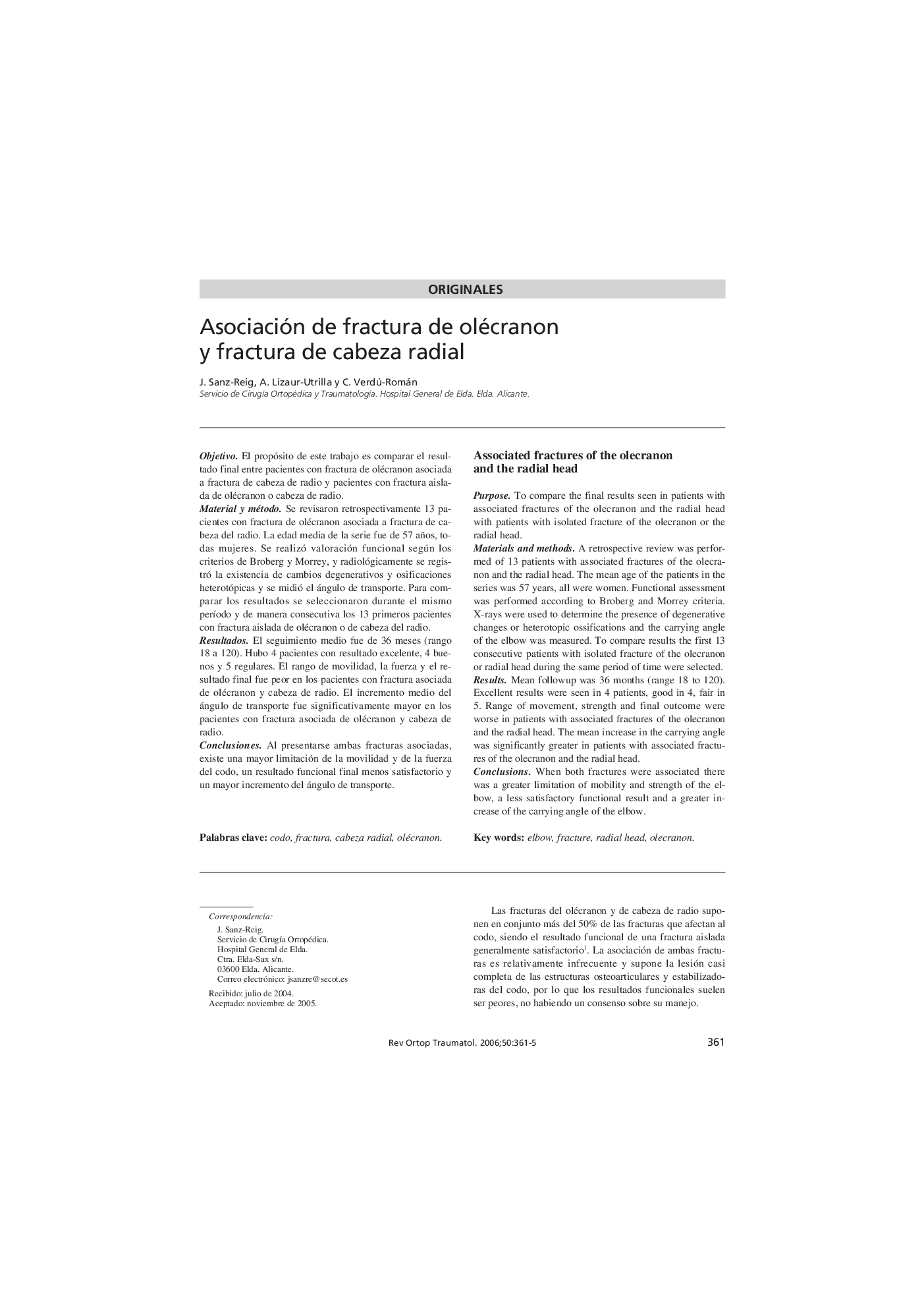| Article ID | Journal | Published Year | Pages | File Type |
|---|---|---|---|---|
| 4086995 | Revista Española de Cirugía Ortopédica y Traumatología | 2006 | 5 Pages |
ObjetivoEl propósito de este trabajo es comparar el resultado final entre pacientes con fractura de olécranon asociada a fractura de cabeza de radio y pacientes con fractura aislada de olécranon o cabeza de radio.Material y métodoSe revisaron retrospectivamente 13 pacientes con fractura de olécranon asociada a fractura de cabeza del radio. La edad media de la serie fue de 57 años, todas mujeres. Se realizó valoración funcional según los criterios de Broberg y Morrey, y radiológicamente se registró la existencia de cambios degenerativos y osificaciones heterotópicas y se midió el ángulo de transporte. Para comparar los resultados se seleccionaron durante el mismo período y de manera consecutiva los 13 primeros pacientes con fractura aislada de olécranon o de cabeza del radio.ResultadosEl seguimiento medio fue de 36 meses (rango 18 a 120). Hubo 4 pacientes con resultado excelente, 4 buenos y 5 regulares. El rango de movilidad, la fuerza y el resultado final fue peor en los pacientes con fractura asociada de olécranon y cabeza de radio. El incremento medio del ángulo de transporte fue significativamente mayor en los pacientes con fractura asociada de olécranon y cabeza de radio.ConclusionesAl presentarse ambas fracturas asociadas, existe una mayor limitación de la movilidad y de la fuerza del codo, un resultado funcional final menos satisfactorio y un mayor incremento del ángulo de transporte.
PurposeTo compare the final results seen in patients with associated fractures of the olecranon and the radial head with patients with isolated fracture of the olecranon or the radial head.Materials and methodsA retrospective review was performed of 13 patients with associated fractures of the olecranon and the radial head. The mean age of the patients in the series was 57 years, all were women. Functional assessment was performed according to Broberg and Morrey criteria. X-rays were used to determine the presence of degenerative changes or heterotopic ossifications and the carrying angle of the elbow was measured. To compare results the first 13 consecutive patients with isolated fracture of the olecranon or radial head during the same period of time were selected.ResultsMean followup was 36 months (range 18 to 120). Excellent results were seen in 4 patients, good in 4, fair in 5. Range of movement, strength and final outcome were worse in patients with associated fractures of the olecranon and the radial head. The mean increase in the carrying angle was significantly greater in patients with associated fractures of the olecranon and the radial head.ConclusionsWhen both fractures were associated there was a greater limitation of mobility and strength of the elbow, a less satisfactory functional result and a greater increase of the carrying angle of the elbow.
